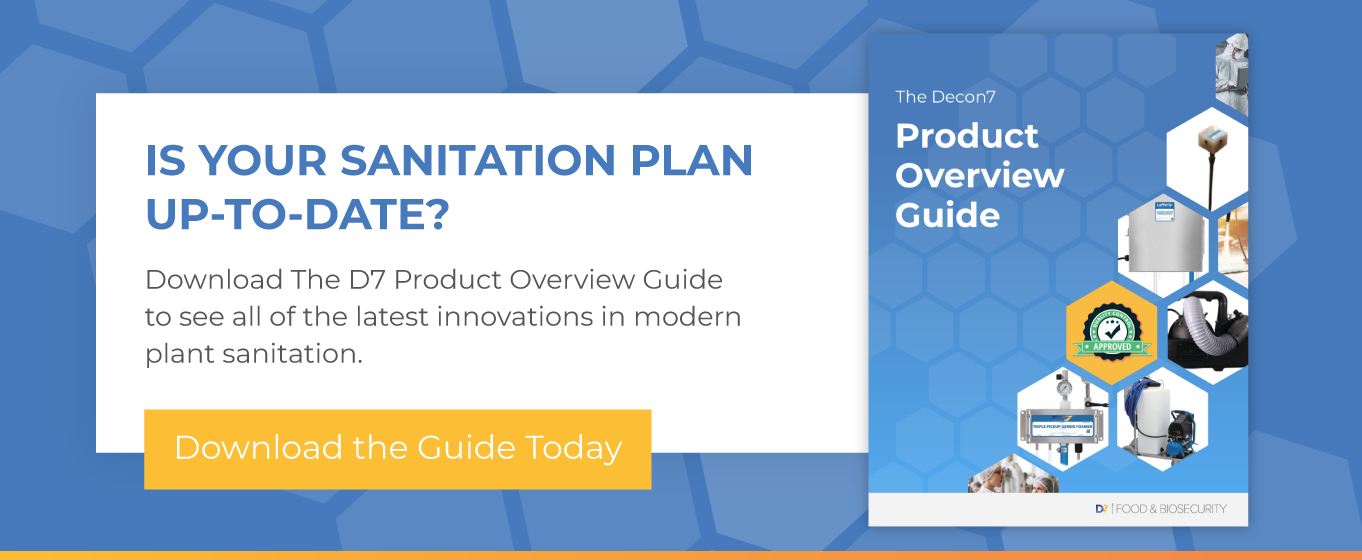Language plays a major role in the regulation of chemicals, and there can be important differences in the terminology that regulators use and the words used by everyday consumers. For example, when many people hear the term “pesticide,” they envision products that are used on crops to kill insects and weeds. It’s true that this is one correct definition, but it’s not the only one.
Regulatory agencies like the EPA use the term pesticide in a broader sense to include products that:
- Prevent, destroy, repel, or mitigate any pest, including microorganisms
- Can be used as a plant regulator, defoliant, or desiccant
- Can be used as a nitrogen stabilizer
The phrase “any pest” might refer to insects, weeds, rodents, molluscs, fungus, viruses, bacteria, and so on. A few examples of products that the EPA classifies as pesticides include:
- Flea and tick prevention
- Mosquito repellant
- Household and commercial disinfectants
- Wood preservatives
As you can see, pesticides encompass a broad and varied group of products that extend well beyond agricultural use.
The Regulatory Landscape: EPA and FIFRA
In the United States, the Environmental Protection Agency (EPA) is the organization that regulates the sale and use of pesticides. The Federal Insecticide, Fungicide, and Rodenticide Act (FIFRA) is the legislation that governs registration, distribution, sale, use, and disposal of pesticides. Under FIFRA, any product intended for use as a pesticide must be registered with the EPA.
Why You Should Use EPA-Registered Products
Unfortunately, although it’s not legal and there are penalties if the products are discovered, there are few barriers for companies to produce and sell products that claim to be pesticides but do not meet the rigorous regulatory requirements. Fraudulent products are a significant problem because they present risks to individuals and the businesses that use them. This is why it’s so important to choose only products that are registered with the EPA.
It’s also important to remember that the use of unregistered pesticides is against FIFRA regulations and that there are penalties for organizations, especially those related to public safety, that do it. In addition to publicly announcing violations, the EPA can also administer fines. One challenge companies face is that they could unknowingly use an unregistered pesticide because the product is labeled as decontaminant. When choosing disinfectants or sanitizers, remember that microorganisms such as bacteria and viruses are considered pests and the products used to kill them are technically pesticides.
In order to register a pesticide with the EPA, the applicant must show that the product does not present unreasonable risk to humans or the environment. Registered products must also meet efficacy and safety standards to support their label claims and can only use specific language on product labels. If you use products that are not registered with the EPA, the risks include:
- Erroneous label claims
- Incomplete ingredient lists
- Ingredients that are harmful to humans and the environment
- Insufficient instructions for use
Without EPA registration, there is no guarantee that a product will be safe and effective.
Disinfectant and Sanitizer Registration and Labeling
Because disinfectants and sanitizers are formulated to kill bacteria, viruses, and fungi, they are considered pesticides by the EPA and are subject to the rules outlined in FIFRA. In order to make certain claims, the products must be registered with the EPA and conform to specific label requirements. The types of claims that can be made for an EPA-registered disinfectant vary depending on the product. For example, a few of the claims Decon7 can use for D7 include:
- Kills 99.9999 percent of bacteria in biofilm on a hard, non-porous surface
- Effectively cleans and disinfects all hard, nonporous surfaces
- Possesses broad-spectrum bactericidal activity
On the other hand, there are certain types of pesticide claims that cannot be made because there are no tests that can adequately prove them. For example, disinfectants can only be tested for efficacy on hard, nonporous surfaces, so any claims about killing bacteria and viruses on soft surfaces are not compliant.
Emerging Viral Pathogen Claims
When a new virus emerges, as is the case with COVID-19, there isn’t sufficient time or access to the current pathogen to test every possible product for efficacy. However, because the mechanisms are the same for killing other types of similar viruses, disinfectant producers can receive permission to make claims about the efficacy of their products on emerging viral pathogens. In March 2020, after the CDC declared an outbreak of the novel coronavirus, Decon7 applied for and received permission to market D7 as a product that is effective against emerging viral pathogens when following the disinfection directions and preparation for norovirus. More information about norovirus can be found at cdc.gov/norovirus.
The Decon7 Team Is Here for You
Whether you are responsible for disinfecting and sanitizing an office, common area, public space, hospital, food processing facility, or ambulance, you need products you can trust. D7 is an EPA-registered disinfectant, viricide, fungicide, deodorizer, and food contact sanitizer (for specific organisms that meet label claims) that is safe and easy to apply. The product is on the EPA’s list of approved disinfectants for use against SARS-CoV-2, the virus that causes COVID-19. It is important to note that the 300+ products on this list are not equivalent in terms of safety or efficacy. D7 is the right choice because of the detergent in the formulation and its high log kill.
The Decon7 team will work with you to find the right solutions for your specific application. If you’d like to learn more, ask us about our public safety applications.

